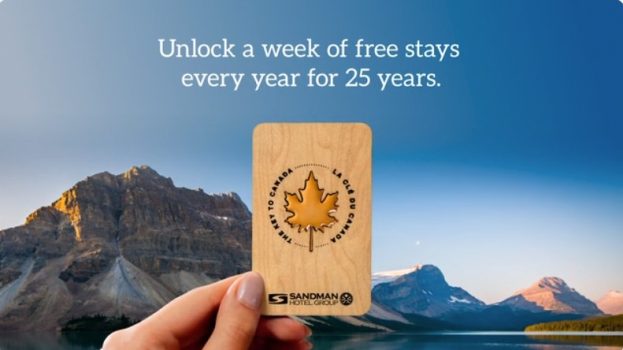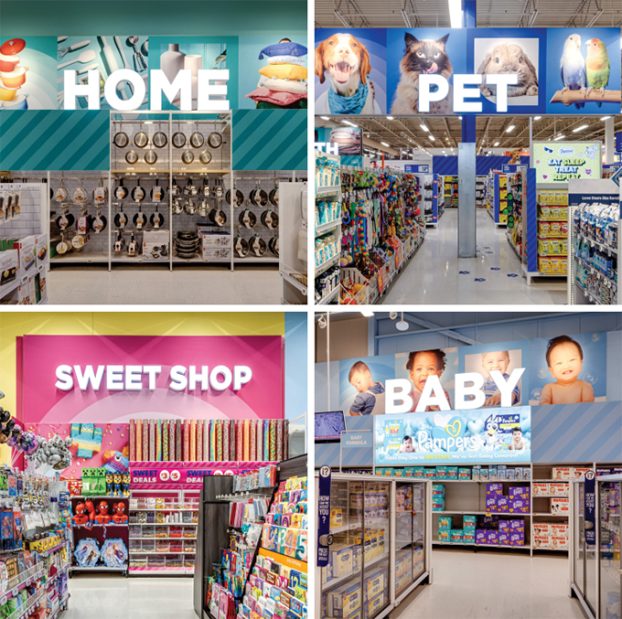It’s like a marriage gone sour. Americans used to drive over the border in droves, lured by a high exchange rate and a welcoming border setup. But just like most Hollywood relationships, an infatuation that was once hot and heavy has gone downhill rather quickly.
First there’s that pesky, lofty loonie, hovering in the 90-cent range, which has turned Americans off travel to Canada. Then there’s the U.S. government’s decision to require anyone crossing the border to carry a passport – akin to asking for a prenup – which comes into effect for air travel in January. While passports are not necessary for auto travel until 2009, and there’s talk of an alternative means of identification, consumers are confused – and that confusion has certainly helped fuel a decline in U.S. border crossings.
These two factors, plus a sluggish U.S. economy, have left most tourism marketers in Canada facing a quandary: What do you do when a crucial target market is no longer interested in your product? The answer, as many players are starting to demonstrate, is simple: You move on and court somebody new.
That’s certainly the approach of Vancouver-based Intrawest. Says Erik Austin, VP marketing for the company: ‘If one market is down, you need to be looking at development of other markets. One market that was not susceptible to the exchange rate and travel restrictions was the Canadian market, where people were [already] aware of what Intrawest was.’
As a result, Intrawest, which operates mountain resorts at Whistler-Blackcomb, Tremblant, Blue Mountain (Collingwood) and Panorama (near Invermere on the Lake, B.C.), decided that rather than go out and look for new customers in the U.S., it made sense to focus on existing customers in its own backyard and attempt to ‘migrate’ them through the network. After studying its database, Intrawest decided southern Ontario consumers had the most potential of visiting the various locations.
Thus, the birth of the ‘Destination Next’ campaign, a multi-tiered marketing initiative geared at boosting resort visits by Ontarians. ‘The destination strategy is to take an element that would link all four ‘mountain villages’ together,’ says Austin, adding that it’s the first time Intrawest has invested in a ‘collective’ campaign that advertised all of its Canadian destinations at once.
The advertising message revolved around value, and consumers were told that if they booked by Nov. 15, they could save up to 45%. They were also baited with a $500 Destination Next Savings card, redeemable at participating merchants and vendors throughout each mountain village.
‘Our competition is not necessarily the other little ski area in Ontario – we are looking at Florida, the Caribbean, Disney, the cruise market and anywhere people spend their leisure dollars,’ explains Austin. ‘We don’t want people to wait until the last minute. We want people who book in advance, who take the time to plan and lock in their vacation, to have the best value possible.’ This counters most value tourism strategies, he points out, which tend to focus on last-minute deals.
The goal of ‘Destination Next,’ which launched this fall and includes advertising, PR, direct mail, a presence at the Toronto Ski Show and street marketing, is specific for each market. For instance, in Whistler-Blackcomb, where 56% of travellers used to come from the U.S., the objective is to increase visitations from the Ontario market by 20,000 room nights. To date, the initiative’s results look like they might indeed climb Rockies-high: Intrawest estimates that room-night bookings are tracking at +24% versus the year prior.
Similarly, Tourism Toronto is also making a play for the domestic traveller. Joel Peters, SVP/CMO of Tourism Toronto, The Toronto Convention and Visitor Association, faces a double whammy, saying that the present currency robustness that is causing Americans to disengage from cross-border activity is encouraging Canadians to do so. ‘Keeping people at home is going to take an increased marketing effort and we are redirecting some dollars to do more in our Ontario and Quebec market,’ confirms Peters.
To that end, Tourism Toronto’s fall campaign is geared at female Canadians, who tend to make the household travel decisions, according to Peters. It focuses on the depth and range of retail and entertainment options in Canada’s largest city, and specifically highlights seasonal events such as the Royal Agricultural Winter Fair, the Rockettes show and the Santa Claus Parade. Ads are running in newspapers, on doorhangers in upscale neighbourhoods and on female-targeted websites
like mochasofa.ca and Chatelaine.com.
But Tourism Toronto isn’t giving up on the U.S. consumer. Instead, the organization is going after a different class of American traveller. Traditionally, middle-class consumers from Buffalo, Rochester and Syracuse, N.Y., plus smaller towns in between, used to be attracted to the Toronto area because their vacation buck would go farther. And now that those folks just aren’t as into us any more, Peters says: ‘We have to go further afield to find a consumer who is more mobile and more upscale.’
Thus, the new target consists of Americans who live in affluent suburbs around New York, Boston and Washington, who are most likely to already have passports and remain unaffected by the exchange rate. This shift in strategy is also responding to a trend that has seen drive-in traffic slow down, while air traffic into Toronto is holding steady.
The campaign, explains Peters, aims to ‘present Toronto as a suitable escape market. ‘You can escape your daily routine and get something different and it’s less than two hours away.” That message will be delivered on commuter trains that run between the three east coast cities, where consumers will have a couple of hours to take in the details. Tourism Toronto is also relying on spot cable that will run in affluent areas, as well as doorhangers.
‘With the U.S., the feeling is that because we have a directional downturn, we have to reverse it,’ says Peters. ‘Looking at the marketing efforts this fall, are we going to have huge ROI from this campaign? No, but we need to get out there and work these different media to see if we can break through and see a positive return. So we’ve put specific URLs on each of the campaigns and are tracking them and going at it from the point of view that there’s some learning here.’
Like Tourism Toronto, Tourism BC is still courting Americans along with domestic travellers, but the organization has also changed its go-to strategy. Carol Nelson, director of marketing for North America, spells out the lay of the land: ‘If you look at [numbers], we’re down for overnight [U.S.] visitations January to August by 3.7%, [compared to] 6.2% in Ontario. [But] hotel tax receipts in B.C. [for the same period] are up 8.1%. So what that tells us is we are seeing increases from within Canada.’
However, she adds: ‘We are not abandoning the U.S. market. What we typically do is target high-potential markets and those usually include B.C., Alberta, and Ontario, as well as the western corridor in California and Washington [state]. We need to work a little smarter in those markets and talk about how easy it is, the number of flights per day and all of those things that can subtly overcome the hassle factor. And then in the Canadian markets we really speak to the undiscovered that is available in B.C.’
In the last two or three years, she explains further, Tourism BC has shifted how it approaches these markets, by becoming less geographically focused and more direct and customized. ‘We are exploring a lot more database marketing and doing something that we call ‘curricula-based’ marketing, which is taking information that individual consumers have told us and using that to inform the communication that goes back out to them.’
A recent example was a campaign that ran from April through September dubbed BC Escapes. It was a $5.5 million ad campaign geared at generating incremental traffic from B.C., Alberta, Ontario, Washington and California. But the messaging and mediums differed in each location. For instance, in San Francisco and Los Angeles, Tourism BC relied on direct response television, due to the region’s lower awareness of the province as a destination. The spot directed viewers to ‘Call for your BC Escapes guide.’ Meanwhile, in Toronto, public transit commuters would have stumbled across a subway station domination campaign at Yonge and Bloor streets that urged them to ‘Get to know B.C. from A to Z.’ The ads spotlighted little-known facts about a province most passersby already knew about. Elevator ads and coffee sleeves were also used to pique interest. The result? Inquiries out of Ontario are up 34% versus the previous year.
‘We really have been trying to focus our effort beyond [creating] awareness to say: ‘How do we capitalize on people with existing awareness and convert that to interest and sales?” says Nelson.
After all, why bother chasing someone who isn’t interested in getting to know you better?























